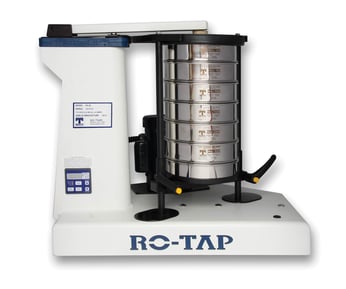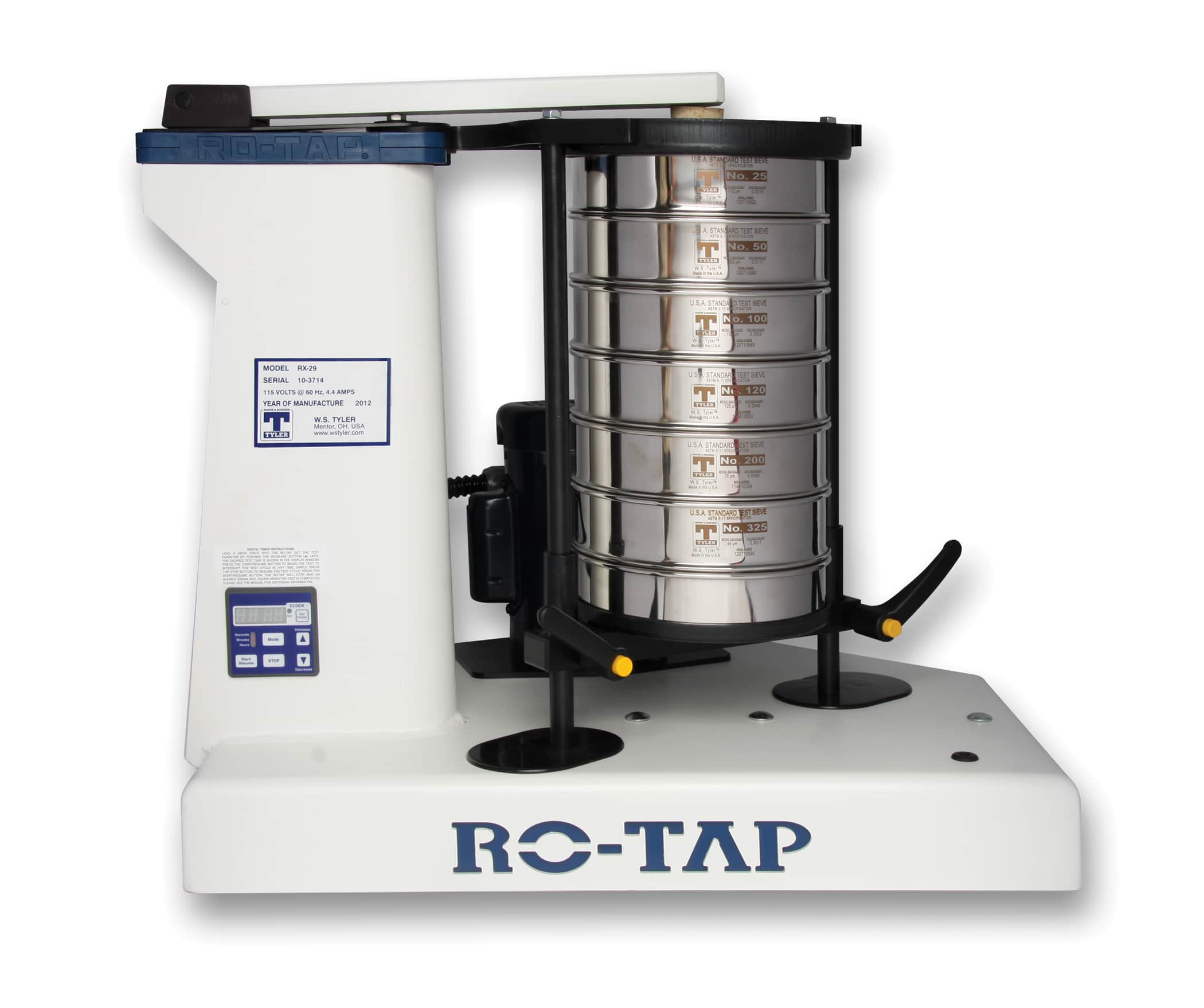A Review of the RO-TAP® RX-29 Mechanical Sieve Shaker
Starting as simple hand sieving, test sieve analysis has been a particle size analysis technique known for its reliability for decades. If you have worked within the realms of test sieve analysis in any capacity, odds are you have heard of the W.S. Tyler RO-TAP RX-29.
It's a device that uses a dual rotating and tapping motion to facilitate particle movement in a test sieve stack. Actually, this is where the name RO-TAP came from.
Having seen the RO-TAP RX-29 thrive for decades, W.S. Tyler has helped hundreds of customers across dozens of industries implement, taking note of the experiences they have.
To leverage the knowledge we have gained throughout the years and help you better understand whether or not the RX-29, in particular, is suitable for you, we wrote a review about it. That said, the following article will cover:
- What an RO-TAP RX-29 is
- How much the RO-TAP RX-29 costs
- The specs of the RO-TAP RX-29
- How the RO-TAP RX-29 works
- The pros surrounding the RO-TAP RX-29
- The cons surrounding the RO-TAP RX-29
What Is the RO-TAP RX-29?

The W.S. Tyler RO-TAP RX-29 is W.S. Tyler's signature mechanical sieve shaker that performs dual oscillating and brute force hammer tap motions to separate the individual particles in a test sieve stack. In other words, it's a device that is designed to agitate the particles on your test sieves to draw a dependable particle size distribution curve.
How Much Does It Cost?
Currently, the RO-TAP RX-29 costs $3,652.85. This price is a reflection of the price of the raw material needed to construct the device and does not include any test sieves.
Put simply, any test sieves you require will increase the overall cost of the order. To find out more about how much your test sieves may cost, we put together the following article:
What Are the Specs?
- Testing Applications: 2" down through 635 mesh (20 microns)
- Oscillations per Minute: 278±10
- Oscillations Displacement: 1-1/8" x 7/16"
- Taps per Minute: 150±10
Available with 115v 230v variants, the RO-TAP can accommodate operations that require 50 cycles and 60 cycles.
In terms of test sieve compatibility, the RX-29 is meant to test 8-inch test sieves. This makes it capable of testing particles ranging from two inches to 20 microns.
When it comes to your test sieve stack, if you use half-height sieves, a test sieve stack can hold up to 13 sieves with a half-height catch pan. If full-height sieves are used, a test sieve stack can hold up to 6 sieves with a full-height catch pan.
Operation
The RO-TAP RX-29 employs a motorized system to drive the oscillating motion and brute force hammer taps that the RX-29 is famous for. This moves the particles on each sieve in a flat plan while forcing them through the mesh openings of the test sieves.
When it comes to operating the device, the RX-29 is very user-friendly. Lab operators simply need to place their test sieve stack, adjust the height of the sieve stack, set the test duration, and press the start button.
To that end, it is recommended to conduct an end of sieving analysis before using the device for the first time.
What Are the Pros?
The most significant selling point associated with the RO-TAP RX-29 is its reputation. Since its creation, the RO-TAP RX-29 has become regarded as the gold standard sieve shaker throughout the particle size analysis industry.
In fact, it can be traced back to dozens of industry standards.
Another key benefit of the RX-29 is its ease of use. As mentioned earlier, the device is, for the most part, plug and play.
This reduces the chances of user error, making it easier for labs with multiple operators that consistent results are achieved no matter who is using the device.
What Are the Cons?
The biggest drawback associated with the RO-TAP RX-29 is the amount of noise it makes. When operating, it can produce 85 dB on top of any rattling particles in your test sieve stack.
This can be managed down to a noise level of 78 dB when the device is placed in a specially made sound encloser.
It should also be noted that the device is construed using casted metal. This makes the device very heavy, requiring at least two people to install or transport it safely.
Additionally, despite the weight, the motions it performs to promote particle movement are pretty aggressive. As a result, the device is known to move and shift when testing material, requiring it to be bolted down.
Know the Process Before Buying
The W.S. Tyler RO-TAP RX-29 is W.S. Tyler's flagship mechanical sieve shaker that has gained an undeniable reputation for producing actuator and repeatable results. Despite it being reflected in dozens of industry standards, the amount of noise that is produced while testing material must be taken into consideration.
Now, there is a good chance that RX-29 can accommodate your particle analysis requirements. But before you invest, you should get to know both the dry and wet sieve analysis processes, as these are the methods you can conduct with the device.
As the creator of the original RO-TAP mechanical sieve shaker, W.S. Tyler holds itself accountable for helping you down the road of implementing particle analysis equipment that genuinely delivers desirable results.
To that end, the following article was written to illustrate what testing material with the RX-29 looks like:
About Ronnie Brown
Ronnie is the Content Writer for W.S. Tyler and has four years of experience as a professional writer. He strives to expand his knowledge on all things particle analysis and woven wire mesh to leverage his exceptional writing and graphic design skills, creating a one-of-a-kind experience for customers.





